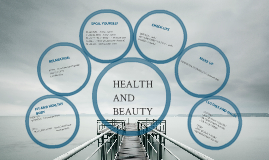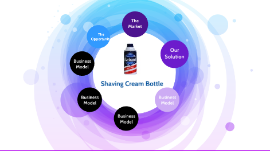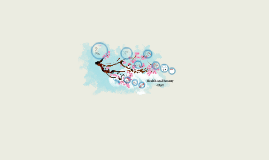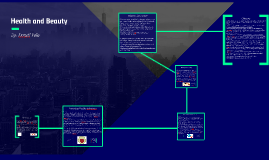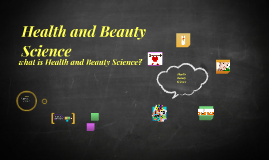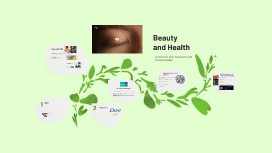Health and Beauty
Transcript: Health and Beauty By: Doneil Polo The government and other institutions are making an effort to reduce the harmful behaviors that citizens possess. In recent years the Canadian government has focused on reducing the rates of smoking and drug use; with executing media campaigns and highlighting the risks of smoking, and enacting laws that establish smoke-free areas, they attempt to limit the amount of cigarette consumers (McGraw-Hill Ryerson, 2012). Before, smoking was permitted everywhere from schools to hospitals, but after major health concerns started arising, a change was made reduce it. Also, the Ontario Ministry of Health are developing and implementing a program of public health interventions using a comprehensive health promotion approach that addresses needs such as: healthy eating behaviors, substance abuse, and mental health promotion (Ministry of Health and Long-Term Care, 2018). People obtain harmful behaviors for a number of reasons: peer pressure, acceptance, instant gratification, early development, external factors. The key is to start young, if ample education is given to a child about the effects of harmful behavior, then the child is most likely not going to participate in those activities. However, psychological impacts can occur from instances such as domestic violence and mental health issues, which may lead individuals to perform harmful behaviors. "As we work to improve the health of our communities, we must address the root causes of such filtering. The reason for unhealthy behaviors is not that the public does not fully understand healthy ones; it is something more deeply rooted in the ills of our society. Unhealthy behaviors start in part as a response to a social environment that fosters no alternatives. To change that environment is the real challenge" (Benjamin, 2003). Going back to desensitization in society, many people have intimate knowledge of illegal behavior and techniques on "the best high," and the harmful behaviors are a byproduct of this filter. Although trying to address the situation of desensitization is complex, it is crucial to teach the next generations of the effects of harmful behaviors through early developmental stages so that reducing it would not be as needed if there is no harmful behavior in the first place. It can also influence previous generations to act like the newer generations as well. 1. Is the Canadian government making an effort to reduce harmful behaviors to its citizens? 2. How can society help reduce harmful behaviors to a minimum and how can we effectively educate people in this area? 3. How do people obtain harmful behaviors? Reducing Harmful Behaviors Promoting Healthy Behaviours Citations Beauty and Identity Overview: - "In Erik Erickson Theory of Psychosocial Development, he theorized that adolescents go through a stage of identity vs identity confusion, which they explore who they are and are extremely concerned on how others view them" (McGraw-Hill Ryerson, 2012). - A teenagers identity is reflected on how they view themselves and is influenced by a number of factors. These factors include the influence family, peers, and the media; depending on the impacts of each factor, it will decide whether a teenager will have a positive self identity or become confused. (McGraw-Hill Ryerson, 2012) - Relating back to media, images of people who have an attractive body type are omnipresent in sources such as television, movies, and magazines. As the media promotes these desirable images, they lure individuals to try and emulate their look (McGraw-Hill Ryerson, 2012). "Any imperfections or minor flaws can disappear with the swipe of a finger or the right phone app. And young women have grown up with this technology. We have been taught from a young age to alter ourselves in order to be beautiful" (Bell, 2019). With prominent media figures, Kim Kardashian as an example, presenting their "perfect" bodies and faces on media outlets, people become insecure and begin to alter themselves to look like them. According to the Canadian Mental Health Association, 70 percent of women and 35 percent of men in Canada are dieting; unfortunately, 10 to 20 percent of extreme dieters die from complications associated with stress (CMHA, 2011). People begin to dislike their bodies and identities based off of what social media portrays as "beautiful," and so many individuals photo shop, extreme diet, or even undergo surgery just to satisfy the expectations of others. The issue of people detaching from themselves and their true identity has become even worse due to the introduction of media platforms and constant images of models appearing on them. "The explanation for the difference between ideals of feminine and masculine beauty might be found in cultural expectations embedded within the North American society" (McGaw-Hill Ryerson, 2012). Society values thinness as attractiveness and is more applied to women; they reinforce this value through media outlets or even







